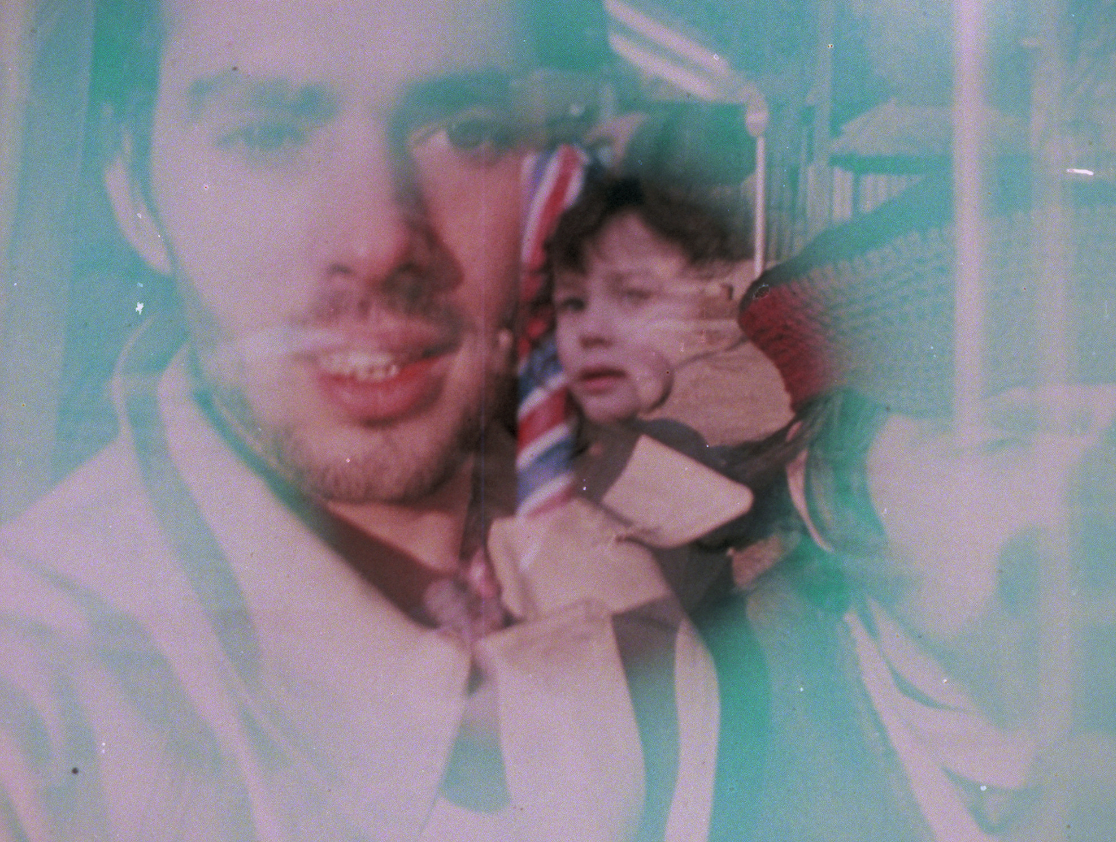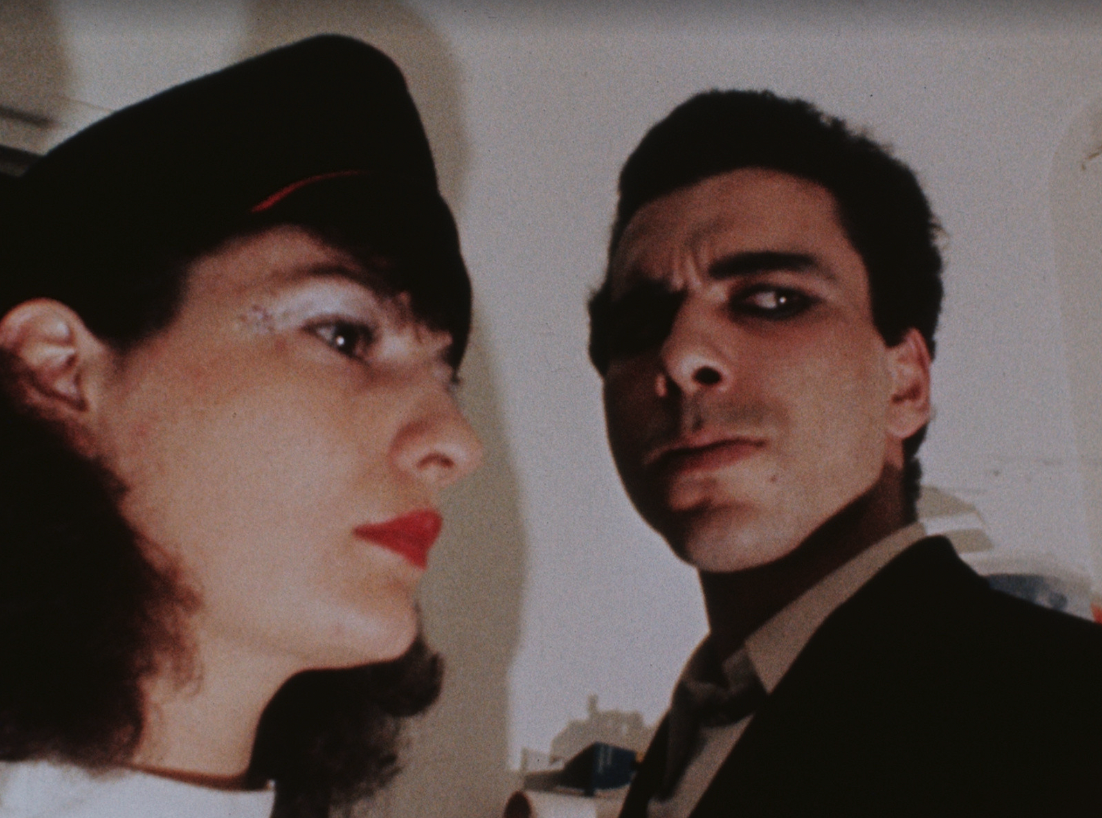Pierre Clémenti may be more familiar to audiences as a magnetic on-screen presence, but from May 1968 onwards he was also a maker of underground films filled with psychedelic energy and radical leftism. On the occasion of a retrospective at MoMA, Ruairí McCann takes a journey into his unique visions.
Souvenirs, Souvenirs (Pierre Clémenti, 1967–78)
In February 1970 in Rome, Miklos Janscó, Glauber Rocha, Jean-Marie Straub and Pierre Clémenti sat down for a group discussion. [1] The heady theme was the possibility of freeing cinema from its status as a chief idealogue of global, industrialised capitalism. At first, the conversation is driven by the reliably voluble Rocha and Straub, though later in the piece Clémenti begins to chime in.
By this point, Clémenti’s reputation as an actor was already well established, and quite unique. Since appearing in Luchino Visconti’s The Leopard (1963) he had achieved an underground superstardom. His Mephistophelian and wounded presence, exuding an allure of sexual danger and vulnerability, and open alignment with the far left in the run-up to, and following, that explosive year, 1968, made him a muse for a subversive strain of modernist cinema. Appearing in films by Luis Buñuel, Bernardo Bertolucci, Pier Paolo Pasolini, Philippe Garrel and, in 1970, Rocha himself.
However, in this discussion, Clémenti is not speaking just as an actor but as a filmmaker. His speculations on how the medium’s miniaturisation could be a potential path for turning a bourgeois commodity into a people’s art and his admiration for the American underground film -were not just percolating in his mind and performances, but being worked out from behind the camera. From 1967, he took up a Bolex and began making short films that were in equal parts diaristic and psychotropic. Blazing overlaid and lapping entities of light & music, of family, friends, and himself in psychedelic exultations of a fiercely committed bohemian existence. This small but rich body of work, along with a few choice examples of his acting, are currently undergoing a retrospective at MOMA in New York. It’s a showcase of an artist who took seriously the radical potential of a new ‘caméra-stylo’—to re-appropriate Alexandre Astruc’s proto-auteurist notion—that the camera could become as swift and ubiquitous as the pen and write a burning, revolutionary script.
Though not the first film he shot, The Revolution Is Only a Beginning: Let’s Continue the Fight (1968) is a major early example of his vivid, bricolage style, and one where the radical political purpose is explicit. The film is a pint-sized but spirited record of the legendary students riots of May 1968, captured in the spur of the moment. This is not just reportage, but an ambitious plait of cinema as a militant weapon, a pathway into the interior and a kaleidoscopic heightener of reality. We see feet on the ground and cobblestones in the air, with first hand footage of clashes between students, workers and the police - but Clémenti also feeds in scenes of his family life, friends, his wife, the actor Margareth and their son Balthazar in Paris and Rome, in their playful day to day. Neither kind of footage is presented as is, but instead heightened. The images come nestled in an irised frame, distorted with multiple exposures and wild psychedelic tinting. Clémenti eschews any explanatory voiceover, opting for scrolling intertitles that shout such statements as “Art is shit. This movie is shit. The one who made it is an asshole. The ones who discuss it are assholes.”
The Revolution Is Only a Beginning: Let’s Continue the Fight (Pierre Clémenti, 1968)
As an experimentally non-dictatorial piece of newsreel, it’s as potent a transmission of May ’68, the revolutionary moment and the power of its image, as its kindred spirit, Actua 1 (1968), directed by Philippe Garrel. The kinetic colour palette and the juxtaposition between its bucolic Italian scenes with the direct action reportage renders the act of revolution as a joyous and creative force, without short-circuiting its rage and strong political will.
The filmmaker Jackie Raynal, Clémenti’s contemporary and a member of the Zanzibar Group, a collective of dissident filmmakers, including Garrel, to whom Clémenti was associated, once stated about her compatriots; “We were influenced by Andy Warhol, and we were closer in spirit to the Factory than to the French New Wave.” [2] The influence materialises in Clémenti’s first feature-length work New Old (1979). A trilogy of films, Visa De Censure No.X, Livre De Famille, and Anima Mundi, filmed in fits and starts across the late 60s and 70s.
This anthological approach and the protracted period of filming reveal key aspects of Clémenti’s practice. The latter is partly a necessity, since eschewing ‘traditional’ modes of financing left him with little money to work with, largely his own. It’s also an intentional avoidance of bestowing any single film a monolithic status. He did not make holy objects, for his films don’t occupy a heterogenous space. Instead, they intermingle, sharing footage, and Clementi’s love of multiple exposures and rhyming, paroxysmal editing creates an aura of perpetual redressal, rather than of sanctified ossification.
New Old is not only three films but a cornucopia of approaches and style. Visa De Censure No.X is perhaps the most varied. A melange of casual autoportraiture, such as behind the scenes on Garrel’s The Inner Scar (1972) and the Clémentis on holiday, with moments of hyperactive hippie play. Such as a prog jam session perched on the coast, where images pile on each other like the crashing waves, or a hallucinatory hang out-cum-cabaret, not unlike Kenneth Anger’s Inauguration of the Pleasure Dome (1954). The manic accumulation of wilful abandon climaxes with the cortex branding sight of Clémenti vomiting live crabs. As the title suggests, Livre De Famille consists mainly of diary-like material, including a visit to New York where Clémenti connects with those aforementioned American underground influences, bumping into Warhol, the superstar Viva and the genius minimalist composer Moondog. Anima Mundi veers into very different territory, one of unabashed performativity and fiction, which places Clémenti as a performer front and centre. It’s a Commedia dell'arte piece and a brilliant outlet for Clémenti the actor, including reviving the rarefied pre-Risorgimento setting of The Leopard to play the dual role of a pederastic nobleman and a prancing, syringe-wielding devil.
In the Shadow of the Blue Rascal (Pierre Clémenti, 1986)
This phantasmagorical side of Clémenti’s filmmaking got its fullest outing with In the Shadow of the Blue Rascal (filmed between 1979-85, released in 1986). A crime epic set in the dystopian Necrocity, tyrannised by the twin terrors of dictator General Nutsbody (Pierre Clémenti) and drug lord Captain Speed (Jean-Pierre Kalfon). The artful dodger, working around and against both sides, is the consummate thief and killer Hassan (Achmi Gachem). His Querelle-esque voiceover, along with Clémenti’s blown-out lighting and elliptical editing, and Gilbert Artman and Ricky Darling’s pulsing rhythm section, sets the film a tone of constant potential violence, drugged-out hypnosis, and an everlasting witching hour. The film came out in a period of French cinema where there were several, inventive instances of the ‘policier’ genre, such as the 80s directorial work of another child of the revolution, Juliet Berto, Maurice Pialat’s Police (1985) and Catherine Breillat’s Dirty Like An Angel (1991). Clémenti’s film occupies its own strange zone. An inspired amalgam of the genre with the French mavens of ecstatic literary dissidence, Arthur Rimbaud and Jean Genet, and the contemporary current of cyberpunk.
Clémenti’s unabashed bohemianism and leftism made him many enemies who threw spanners in the works. The most catastrophic of which was his arrest in Rome in 1971 on shaky drug-peddling charges. Though the accusations were eventually dismissed, it was not before he had served nearly two years in prison. It was an experience that was both traumatic and galvanising, and which he recorded and contemplated in his memoir A Few Personal Messages (Quelques Messages Personal, 1973), whose first-time translation and publication in English coincides with this retrospective. He also poured his imprisonment into his final film, and reportedly his own personal favourite, Soleil (1988). A perfect synthesis of the punk policier style of Blue Rascal with a more introspective lens, it’s a fleeting, moving exegesis on the ability to film, to write, to paint, to act, and it transfigures oppression and pain into hope and into one’s relationship with the world. A man-made spell to wrest and ward off the darkness.
[1] ‘There’s Nothing More International Than a Pack of Pimps’ Discussion was transcribed by Patrick Letessier, translated by John Mathews and published originally in Cinematics no. 4. Republished online by Lola in 2004.
[2] ‘Jackie Raynal’ Artforum, Interviews. Published online Feb. 2021.
MoMA’s Pierre Clémenti season runs both physically and online from 14-31 October 2022.
Ruairí McCann is an Irish writer, curator and musician, Belfast born and based but raised in Sligo. He's a co-editor of the film site Ultra Dogme, and has contributed to various publications, such as photogénie, Electric Ghost, aemi online, Screen Slate, MUBI Notebook and Sight & Sound.



